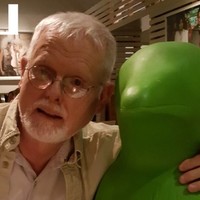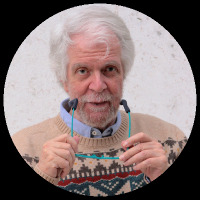Papers by Kaan Ucsu

Bulletin of the School of Oriental and African Studies, 2018
Zionist mapping avoided boundaries altogether, in order to attract immigrants into what was shown... more Zionist mapping avoided boundaries altogether, in order to attract immigrants into what was shown to be an empty land. Here the dispossession of Palestinians required brutal erasure of pre-modern geographical discourses. But, as Antrim shows through a poignant analysis of an eleventh-century “Atlas of Islam” map, Palestine was a place of affective resonance within a larger Syrian region. This chapter ends with a work of art: Mona Hatoum’s Present Tense installation uses olive oil soap to construct a floor mosaic in the form of the West Bank and the Gaza Strip – the indigenous soap dissolves the transient boundaries, and questions the power of maps to arbitrate belonging (p. 232). A final fifth chapter shows how the most current crop of maps project alternative and conflicting futures for the Middle East. Al Jazeera covered the Arab Spring by using an image of the Arab World that had no internal political boundaries, no Arab states at all. Western strategists and media continue to draw lines of partitions based on ethnic and sectarian divisions. These maps are testimony to the persistence of colonial practices; they suggest that the Middle East is not in a post-colonial phase, but rather exists in a colonial present. This beautifully produced book should be of interest to a wide readership. Medievalists would learn much from the first two chapters about pre-modern approaches to geographical space. Historians of the modern Middle East would encounter the richness and the opportunities offered by pre-modern mapping traditions. The book’s exploration of maps as tools of colonial and settler colonial projects illuminates so much about Middle Eastern identities. For historians of cartography, this is the best introduction to the mapping tradition in the Middle East in the medieval, early modern and modern periods, offering insights about the power and limitations of maps in other places and times.
Sahibi Türkiye Diyanet Vakfý © Bütün yayýn haklarý Türkiye Diyanet Vakfý'na aittir. Yazý ve fotoð... more Sahibi Türkiye Diyanet Vakfý © Bütün yayýn haklarý Türkiye Diyanet Vakfý'na aittir. Yazý ve fotoðraflar kaynak gösterilmeden kullanýlamaz. ISBN 978-975-389-877-5 (Takým) 978-975-389-878-2 (Ek 1. cilt) Yönetim ÝSAM, Türkiye Diyanet Vakfý Ýslâm Araþtýrmalarý Merkezi Ýcadiye Baðlarbaþý caddesi 40 Üsküdar 34662 Ýstanbul Tel : (0 216) 474 08 50 Faks : (0 216) 474 08 74 Elektronik posta : isam@isam.org.tr Basým, Daðýtým ve Pazarlama Türkiye Diyanet Vakfý Yayýn Matbaacýlýk ve Ticaret Ýþletmesi OSTÝM Örnek Sanayi Sitesi, 1256. sokak 11, Yenimahalle 06370 Ankara Tel : (0 312) 354 91 31 Faks : (0 312) 354 91 32 Elektronik posta : tdvyayin@diyanetvakfi.org.tr
Z amanı belirlemek insanların en eski uğraşlarından biridir. Özellikle yerleşik düzene geçtikten ... more Z amanı belirlemek insanların en eski uğraşlarından biridir. Özellikle yerleşik düzene geçtikten sonra bununla daha çok meşgul olmuşlardır. Dinî ayinlerin aynı saatte yapılabilmesi, nehir taşkınlarının dönemlerinin tespit edilebilmesi, hasat zamanının belirlenebilmesi gibi sebeplerle zamanı belirleme ihtiyacı duymuşlardır. Bunun için de doğal olarak bazı araçlar tasarlamışlardır; bunların en eskileri güneş ve su saatleridir. Mısır'da üretilmiş ve günümüze ulaşabilmiş en uzak tarihli güneş saati yaklaşık 5500, su saati de 4500 yaşındadır. Astronomideki ilerlemeler sayesinde insanlar ilerleyen yüzyıllarda, zamanı ölçmeye de yarayan başka gözlem aletleri tasarlamışlardır. Usturlap, rubu tahtası, kum saati bu aletlere örnek sayılabilirler.
I. TLCK by Kaan Ucsu
Z amanı belirlemek insanların en eski uğraşlarından biridir. Özellikle yerleşik düzene geçtikten ... more Z amanı belirlemek insanların en eski uğraşlarından biridir. Özellikle yerleşik düzene geçtikten sonra bununla daha çok meşgul olmuşlardır. Dinî ayinlerin aynı saatte yapılabilmesi, nehir taşkınlarının dönemlerinin tespit edilebilmesi, hasat zamanının belirlenebilmesi gibi sebeplerle zamanı belirleme ihtiyacı duymuşlardır. Bunun için de doğal olarak bazı araçlar tasarlamışlardır; bunların en eskileri güneş ve su saatleridir. Mısır'da üretilmiş ve günümüze ulaşabilmiş en uzak tarihli güneş saati yaklaşık 5500, su saati de 4500 yaşındadır. Astronomideki ilerlemeler sayesinde insanlar ilerleyen yüzyıllarda, zamanı ölçmeye de yarayan başka gözlem aletleri tasarlamışlardır. Usturlap, rubu tahtası, kum saati bu aletlere örnek sayılabilirler.
News by Kaan Ucsu
Ottoman world during the 18 th -19 th centuries
Rubrica contemporanea, 2017
Introducción
Darina Martykánová
PDF (Español)
1-5
Science and spirituality: Ottoman incons... more Introducción
Darina Martykánová
PDF (Español)
1-5
Science and spirituality: Ottoman inconsistencies, Europe’s paradoxes
Alper Yalçınkaya
PDF (English)
7-18
The Ideal of the West, the Reality of the East. Towards a New Poetics of Ottoman Modernity in the Novels of "Edebiyat-ı Cedide"
Petr Kučera
PDF (English)
19-41
Witnesses of the Time: A survey of clock rooms, clock towers and façade clocks in Istanbul in the Ottoman Era
Kaan Üçsu
PDF (English)
43-60
Conference Presentations by Kaan Ucsu
by B. Harun Küçük, Oscar Aguirre-Mandujano, Assaf Tamari, Kaan Ucsu, Feray Coskun, Kostas Sarris, NUKHET VARLIK, Matthew Melvin-Koushki, Duygu Yildirim, Monica Meadows, and Selim Kuru
Book Reviews by Kaan Ucsu
Cilt (Vol) 6, Sayı (Iss) 1-Değerelndimlr (Reviews) by Kaan Ucsu










Uploads
Papers by Kaan Ucsu
I. TLCK by Kaan Ucsu
News by Kaan Ucsu
Darina Martykánová
PDF (Español)
1-5
Science and spirituality: Ottoman inconsistencies, Europe’s paradoxes
Alper Yalçınkaya
PDF (English)
7-18
The Ideal of the West, the Reality of the East. Towards a New Poetics of Ottoman Modernity in the Novels of "Edebiyat-ı Cedide"
Petr Kučera
PDF (English)
19-41
Witnesses of the Time: A survey of clock rooms, clock towers and façade clocks in Istanbul in the Ottoman Era
Kaan Üçsu
PDF (English)
43-60
Conference Presentations by Kaan Ucsu
Book Reviews by Kaan Ucsu
Cilt (Vol) 6, Sayı (Iss) 1-Değerelndimlr (Reviews) by Kaan Ucsu
Darina Martykánová
PDF (Español)
1-5
Science and spirituality: Ottoman inconsistencies, Europe’s paradoxes
Alper Yalçınkaya
PDF (English)
7-18
The Ideal of the West, the Reality of the East. Towards a New Poetics of Ottoman Modernity in the Novels of "Edebiyat-ı Cedide"
Petr Kučera
PDF (English)
19-41
Witnesses of the Time: A survey of clock rooms, clock towers and façade clocks in Istanbul in the Ottoman Era
Kaan Üçsu
PDF (English)
43-60